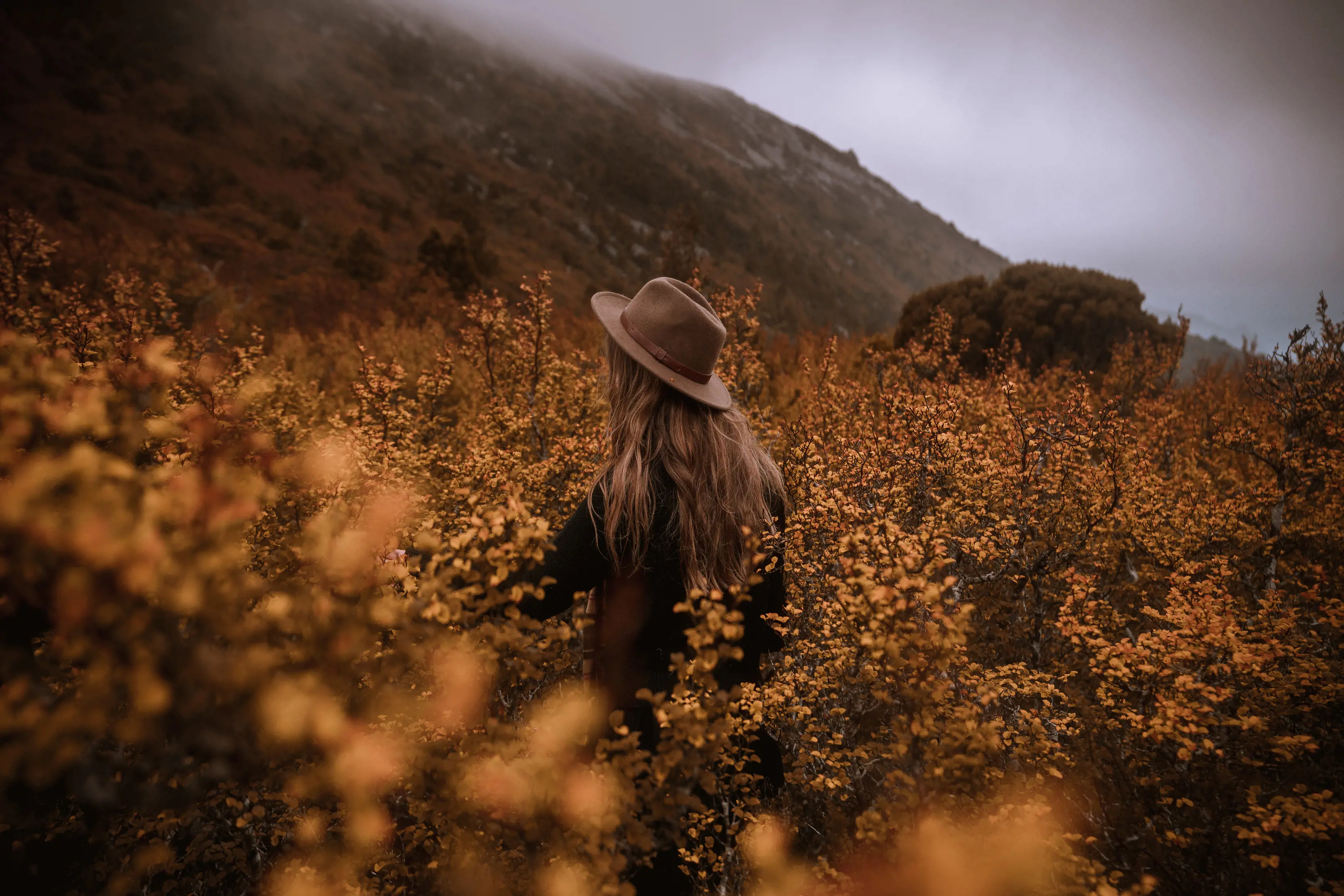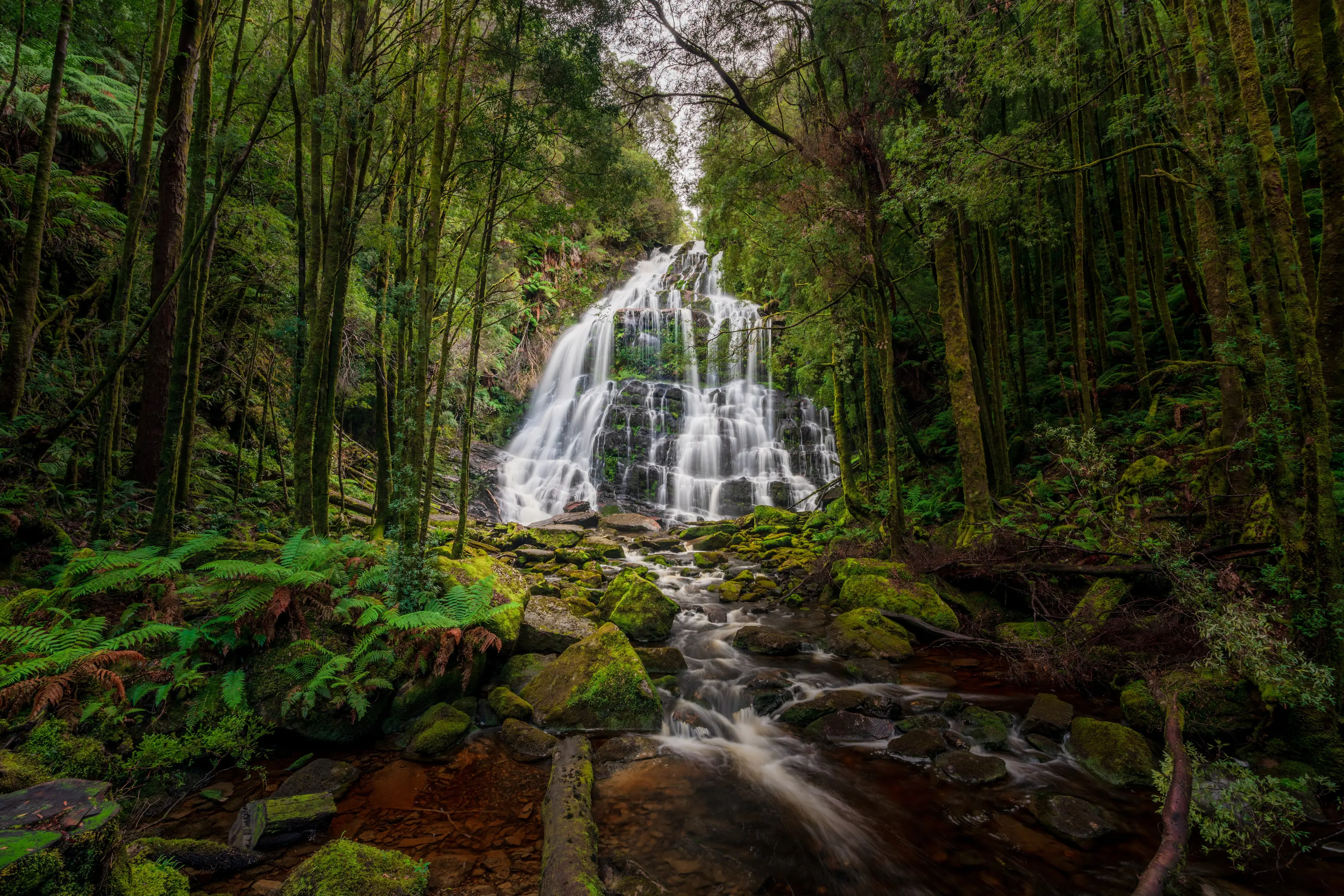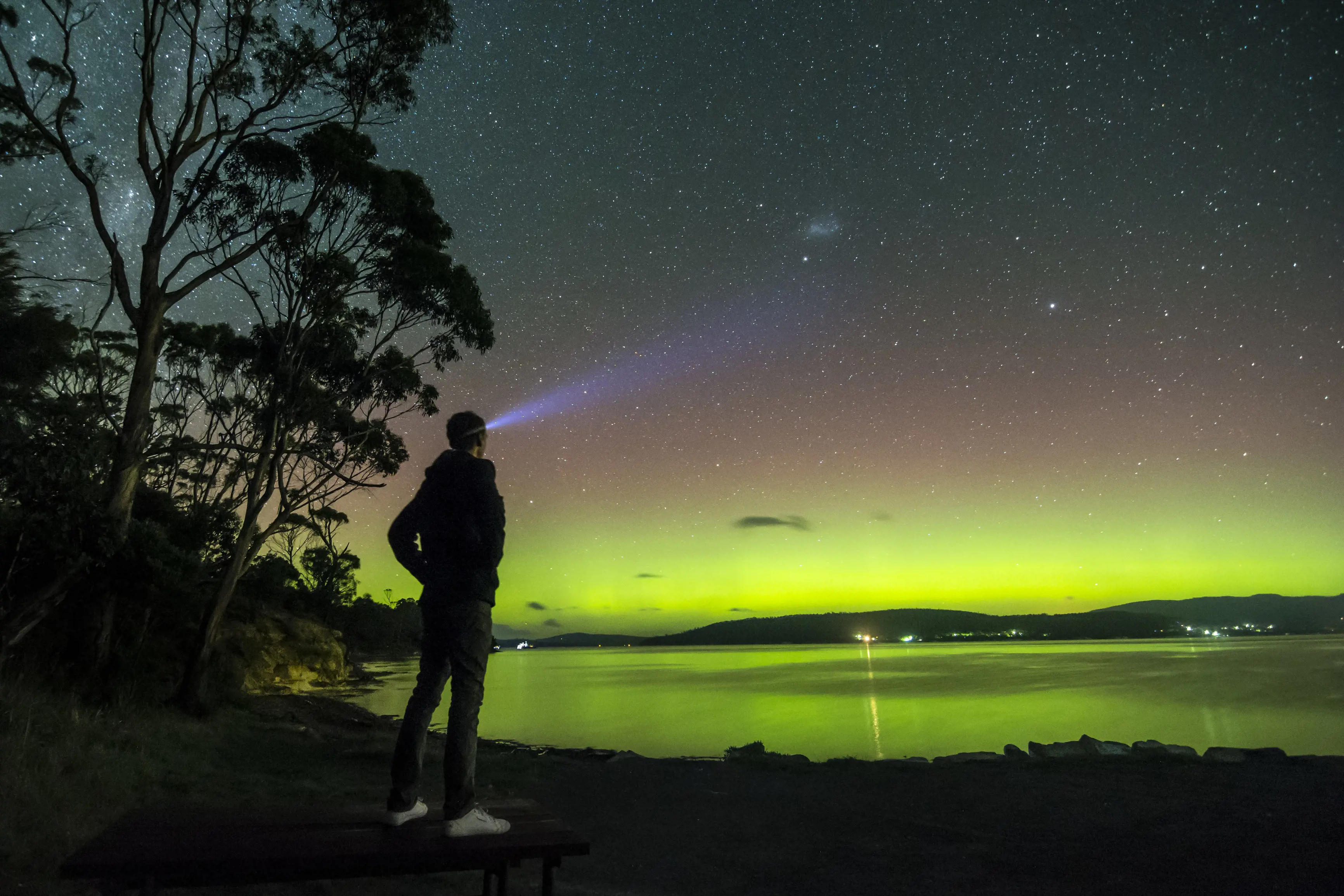
Lost for words? A glimpse of the Southern Lights, monster waves and towering sea cliffs will do that.
Night life
Things get truly wild after dark in Tasmania. It's the best place in the world to witness the elusive Southern Lights, aka the Aurora Australis, which draw a colourful curtain across the sky, especially in winter. Close to shorelines, the brilliant blue glow of bioluminescence can light the sea just as brightly while, overhead, dark skies largely free of light pollution make for sparkling stargazing. This is also the time to see Tasmanian devils feeding, during evening tours at the likes of Devils@Cradle, Bonorong Wildlife Sanctuary and East Coast Natureworld.

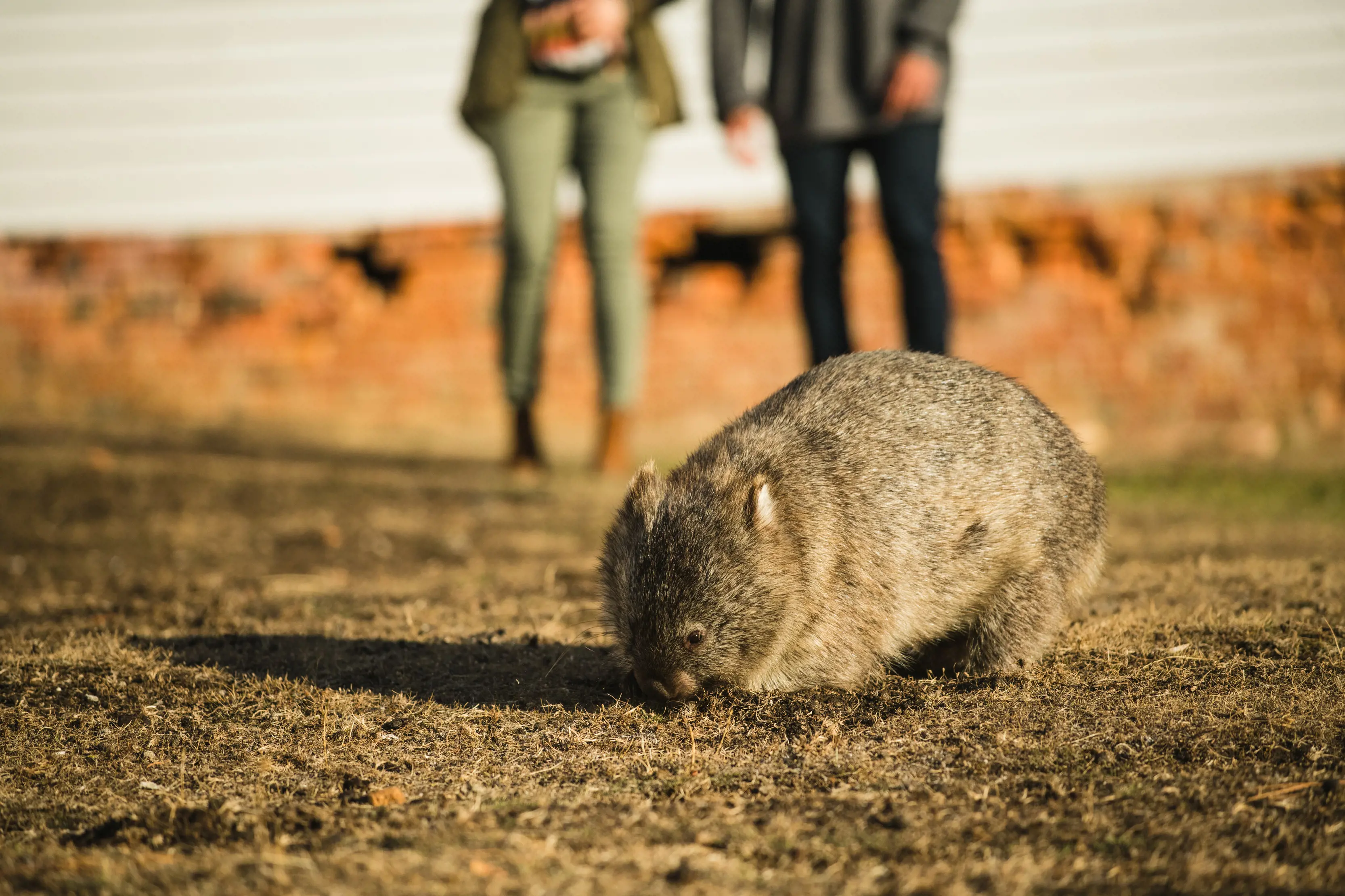
Maria Island
Convicts and industry have come to Maria Island, but only nature has stayed. The entire island is protected as national park, and the only traffic here is the prolific wildlife - a parade of wombats, wallabies, Cape Barren geese and Tasmanian devils. The Fossil Cliffs are, quite literally, composed of millions of prehistoric fossils, and the Painted Cliffs are a masterpiece of sandstone. And it's all tied together by the narrowest of sand isthmuses.
Rock stars
Tasmania is littered with geological marvels, many of them found in Tasman National Park, just over an hour's drive from Hobart. Wander the geometrically perfect patterns of the Tessellated Pavement at Teralina / Eaglehawk Neck, then head a few kilometres down the road to the gaping chasm of Tasmans Arch. Another rock arch, Mars Bluff, erupts from the sands of a beach on Bruny Island. Walk the Three Capes Track to see Australia’s highest sea cliffs and, from the tip of Cape Hauy, peer down on the Totem Pole, a slender sea stack famed among rock climbers.
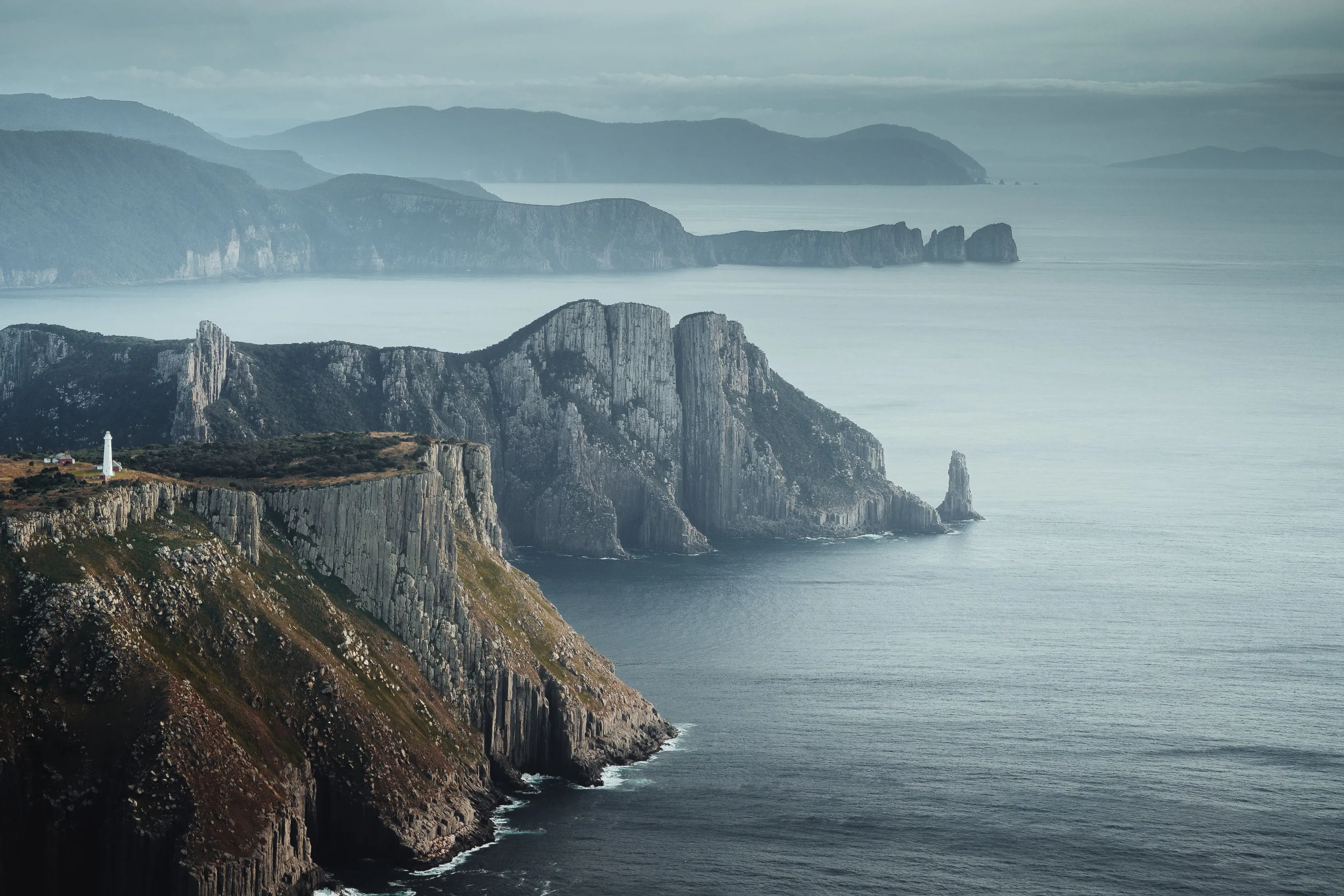
Cool rainforest
Temperate rainforests occur in only a few regions of the world, and the cool temperate version – combining altitude and high rainfall – is rare. The largest tract in Australia (and the second largest in the world) is found in the wilderness of Takayna / Tarkine in north-west Tasmania. Wander beneath huge myrtle beech trees and past ancient Huon pines at Corinna, and float on perfect forest reflections on a cruise along the Pieman and Arthur rivers. The hush of the forest turns to a roar on the coast - feel the Southern Ocean thunder ashore at the Edge of the World or in tiny towns such as Marrawah and Couta Rocks.
Did you know?
Nearly half of Tasmania is protected in national parks and reserves.
Animal action
Think Tasmania, think devils, right? But they're just one of many charismatic creatures. Head to Adventure Bay on Bruny Island to spot rare white wallabies, and spotted-tail quolls quickly become familiar at South Coast Track campsites. Giant freshwater crayfish inhabit northern rivers, and it's a pilgrimage by light aircraft to see one of the world's rarest birds, the orange bellied parrot, at an observation hide in remote Melaleuca. And to see those devils in the wild, make tracks to Maria Island. Endemic species, found only in Tasmania, include the forty spotted pardalote, the dusky antechinus and the Tasmanian pademelon.
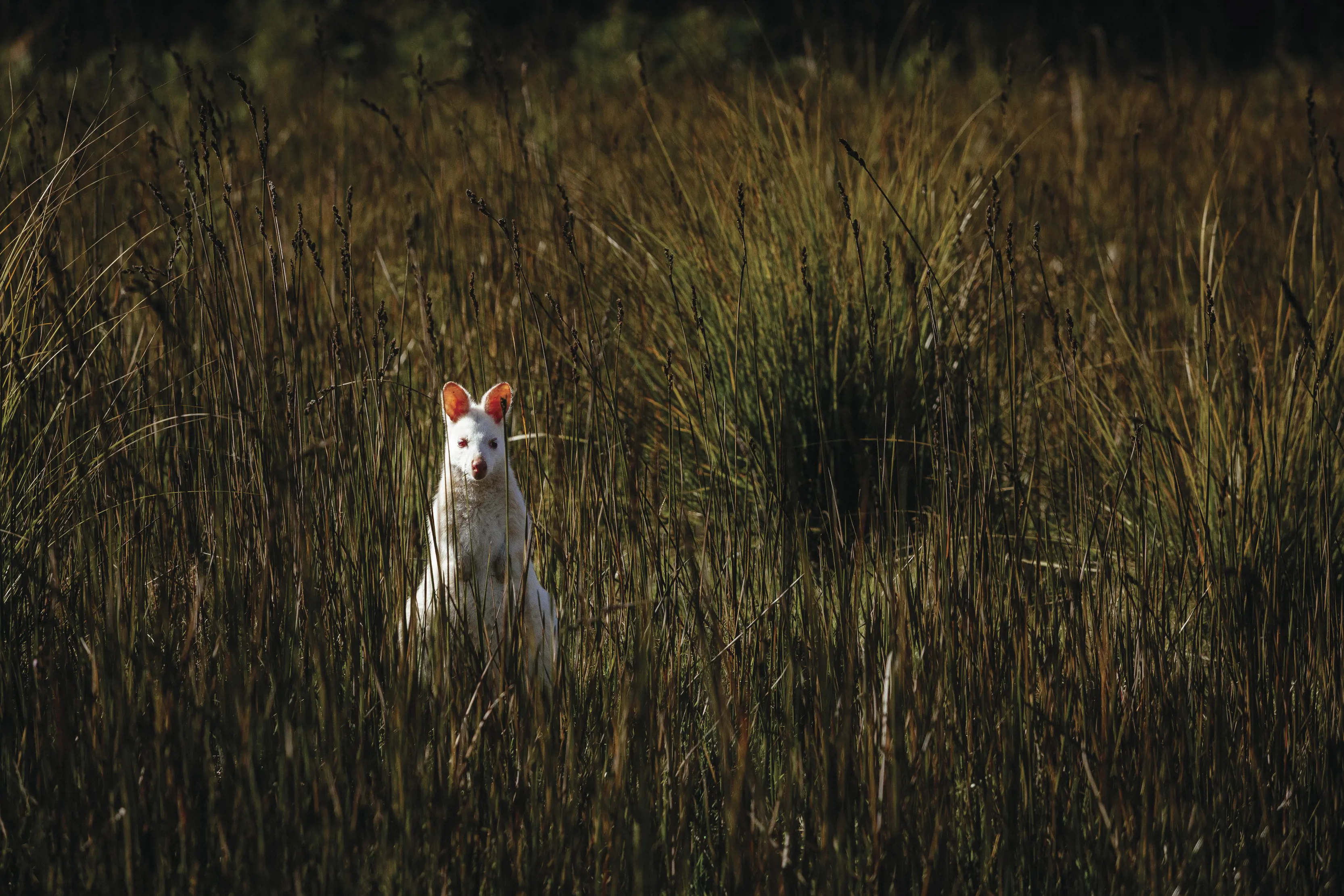
White Bennett's wallaby on Bruny Island
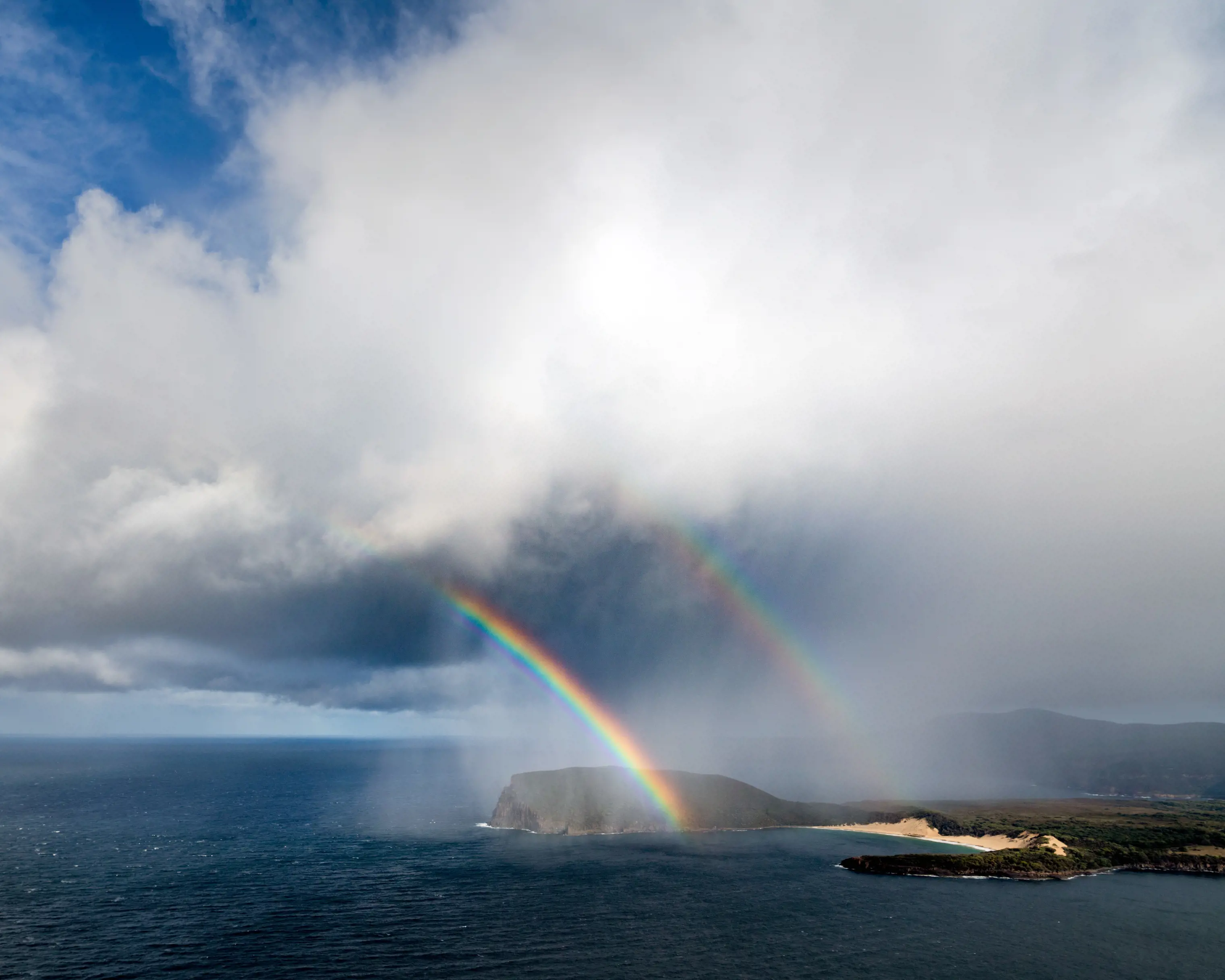
Rainbow over Crescent Bay, Tasman National Park
Rainbow connection
Fleeting and vibrant, rainbows regularly colour Tasmanian skies. The island has the magic rainbow recipe of clear skies, favourable cloud patterns, low-hanging sun and perfect latitudinal position. As an extra party trick, we don’t just do standard rainbows; we do double and triple rainbows.
Breathe deep
Pause. Take a breath. If the air feels fresh and fantastic, it's no trick of the imagination. The air that blows across Tasmania's north-west tip has been analysed by scientists at the Cape Grim Baseline Air Pollution Station for more than 40 years and is regarded as the cleanest air in the world, sustaining rainforests, mountains and farms that yield produce every bit as fresh as that air. Now take another breath.
Big trees
Some of the world's tallest flowering trees tower in Tasmanian forests. It’s worth a road trip to Styx Valley, about 100km west of Hobart, to stand before swamp gums (also known as mountain ash) almost 100m high. The world's tallest white gums - the so-called White Knights of Evercreech - reach similar heights in Evercreech Forest Reserve in the north-east. Prefer longevity over loft? Cruise the Gordon River on the west coast, which is lined with Tasmania's beloved Huon pines, the world's second-oldest trees, some living for more than 2000 years. See more about seeing Tasmania’s giant old trees.
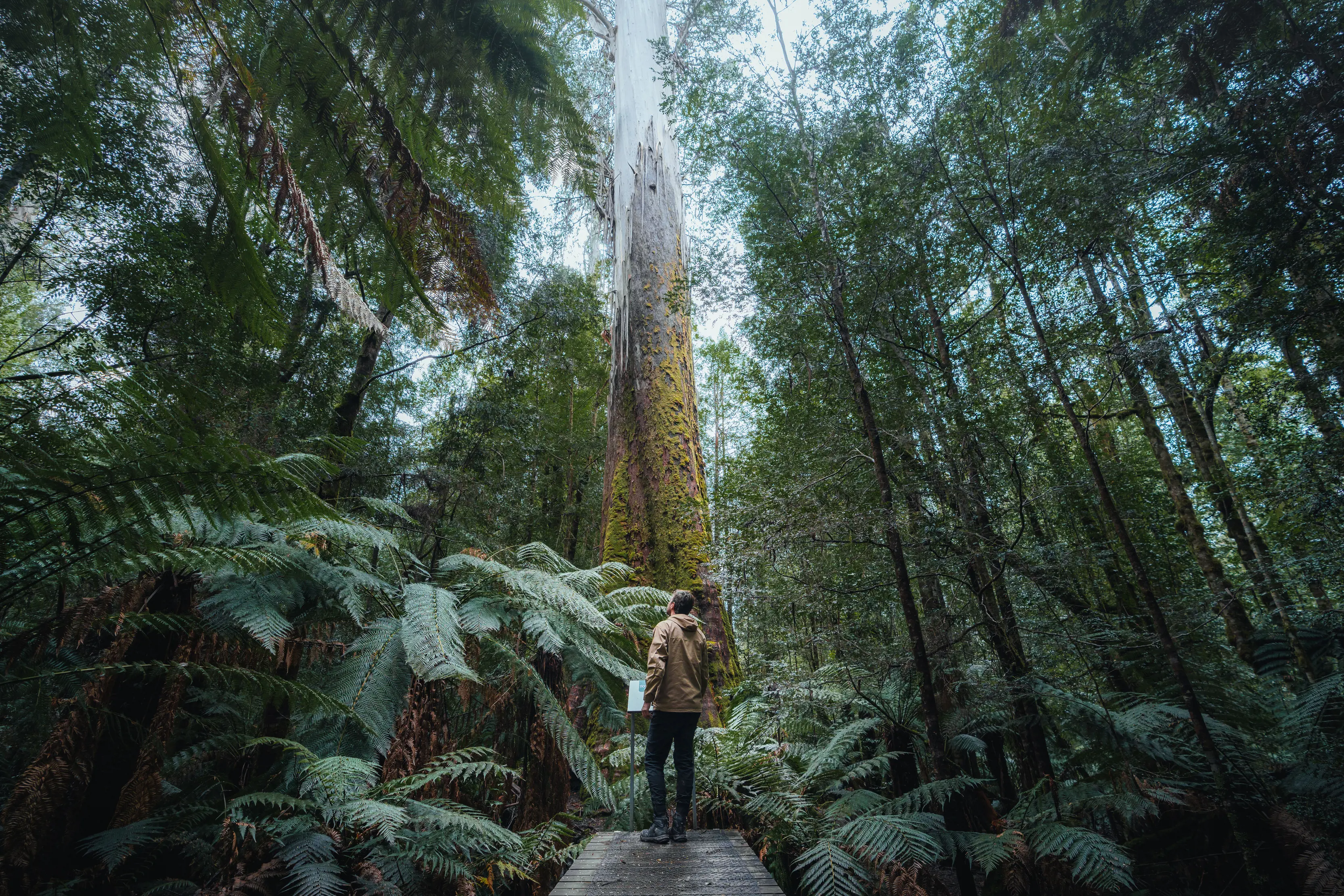
White Knights, Evercreech Forest Reserve
Islands off the island
Arranged around the island state are 334 smaller islands. The bigger ones – Bruny, King and Flinders – have distinctive produce (think cheeses, beer, beef and seafood) and landscapes and experiences to match. Climb the craggy Strzelecki Peaks on Flinders Island, tee off on Australia's top-rated public golf course on King Island, and watch penguins shuffle ashore on the isthmus at Bruny Island.
Bay of Fires
As the name suggests, the string of beaches within the Larapuna / Bay of Fires area blaze with colour: brilliant blue sea, cloud-white sand, and granite boulders and headlands splashed with orange lichen. Drive to The Gardens, darting down to beaches such as Cosy Corner and Swimcart along the way, and see the 19th-century granite lighthouse at Eddystone Point, the bay's northern full-stop. Go boulder-hopping or float freely.
Big breaks
Surfing legends are made at the southern tip of Turrakana / Tasman Peninsula. Among board riders, Shipstern Bluff is revered as one of the wildest breaks in the world, with waves as high as 10m driven into the cliffs by low-pressure systems. Only the best of the best dare ride these waves, typically towed into them by jet skis. Mere mortals lace up their hiking boots for a 2hr walk to the base of the bluff to witness the epic water world of Shippies.
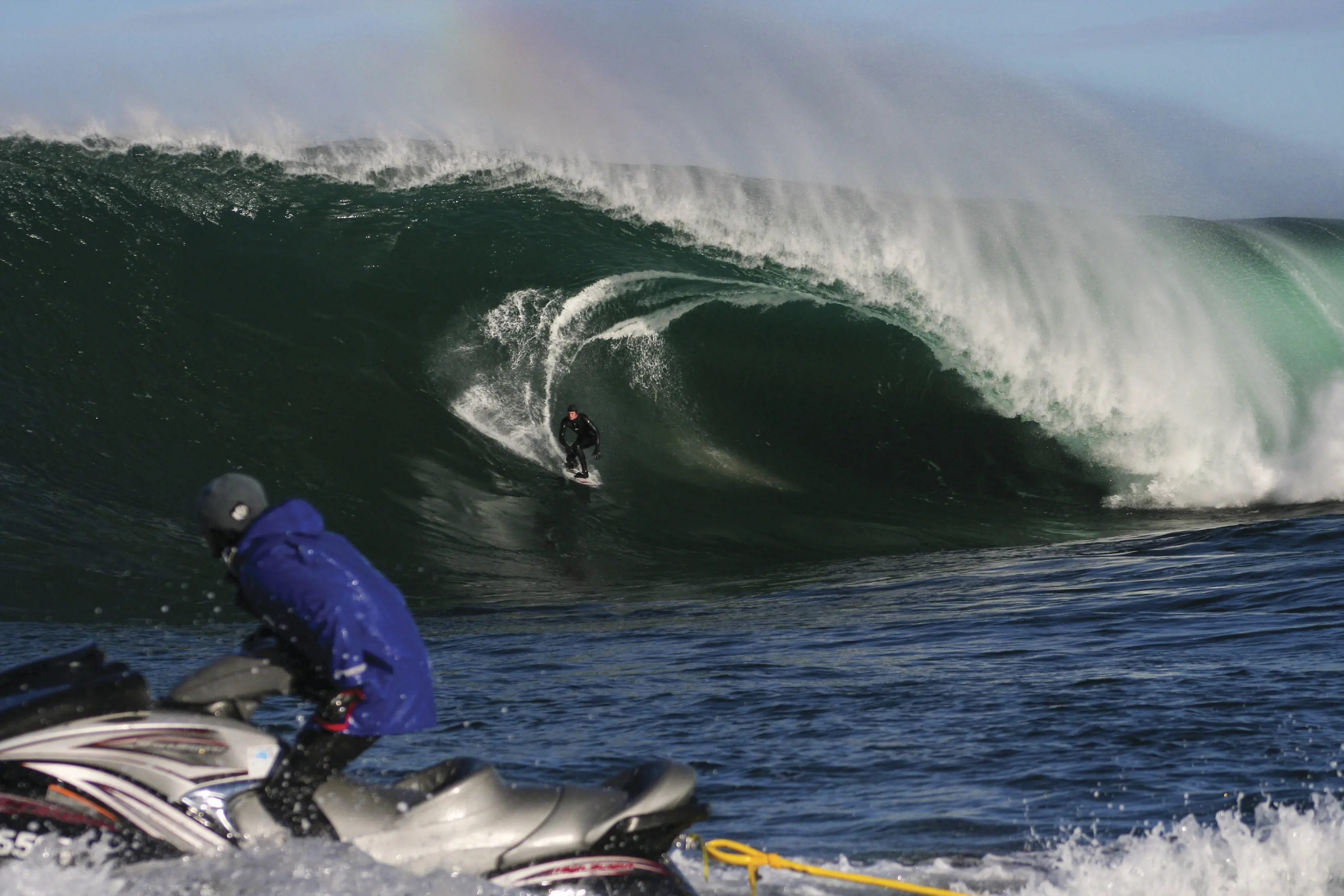
Surfing at Shipstern Bluff, Turrakana / Tasman Peninsula
Big ocean
See the mighty Southern Ocean rage along coastal walks such as the Three Capes Track. Or gaze at its tranquility from Hobart’s waterfront, knowing the next stop is Antarctica. In fact, Hobart is Australia’s HQ for science, research and expedition logistics for Antarctica, sub-Antarctic islands and the Southern Ocean. Hobart has the greatest concentrations of scientists and institutions of the five Antarctic gateway cities (the other four: Punta Arenas, Ushuaia, Cape Town, and Christchurch). Tasmania's links with the frozen continent date back to 1773 when Captain James Cook sought refuge on Bruny Island after circumnavigating Antarctica. Take a glimpse of early exploration at the Mawson’s Huts Replica Museum on the Hobart waterfront, near the wharf where the expedition of Australian explorer Douglas Mawson departed in 1911.
Turning of the fagus
Autumn lights up spectacularly in Tasmania. Join the autumn pilgrimage to witness the “turning of the fagus”, when hillsides of deciduous beech, also known as fagus - Tasmania's only winter-deciduous tree - turn brilliant shades of gold and rust red. It's a colourful crusade that typically leads to Dove Lake in Cradle Mountain-Lake St Clair National Park and across the Tarn Shelf in Mount Field National Park, where entire slopes of the fabled fagus change colour in late April and May.
